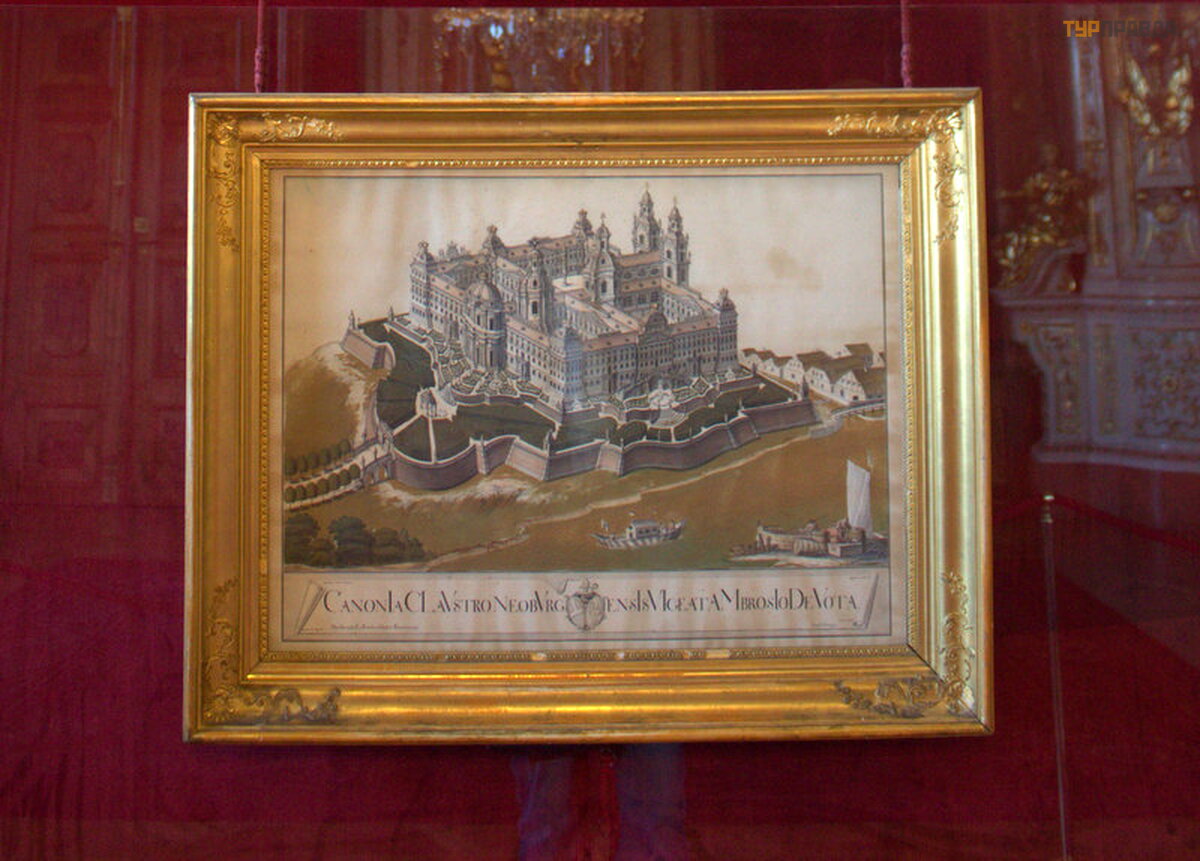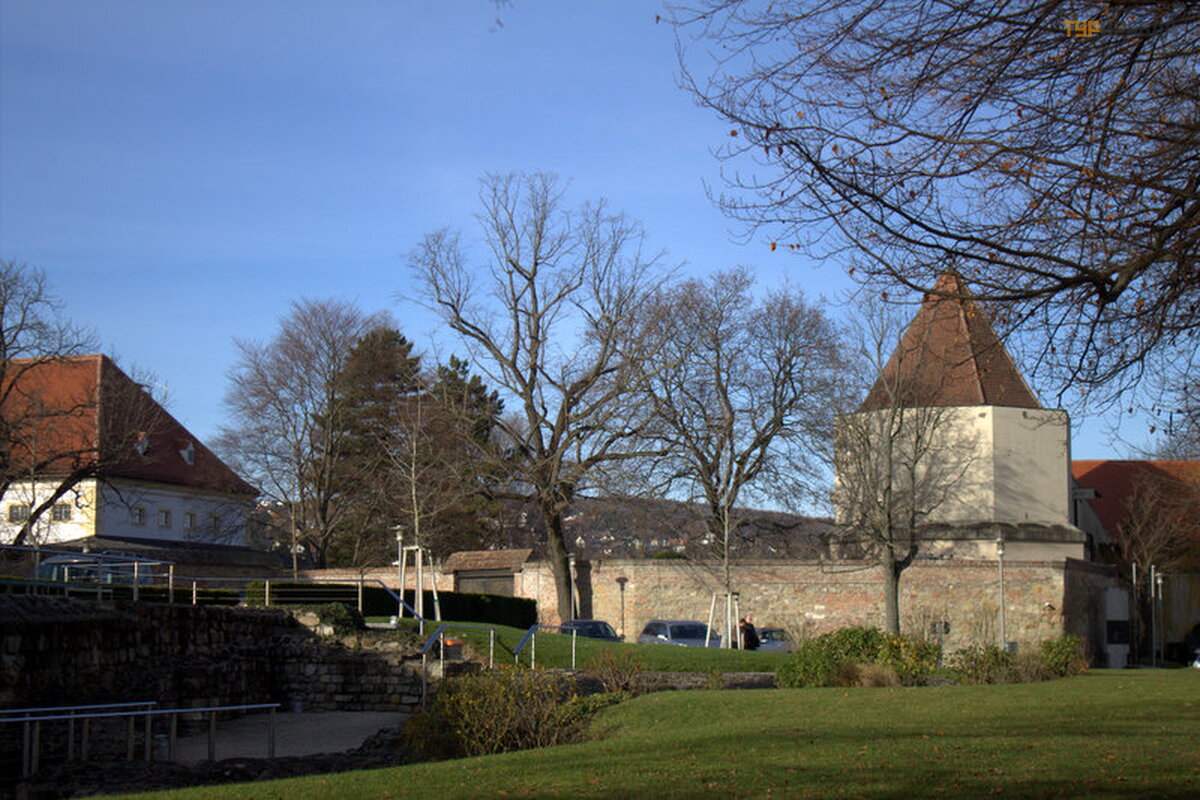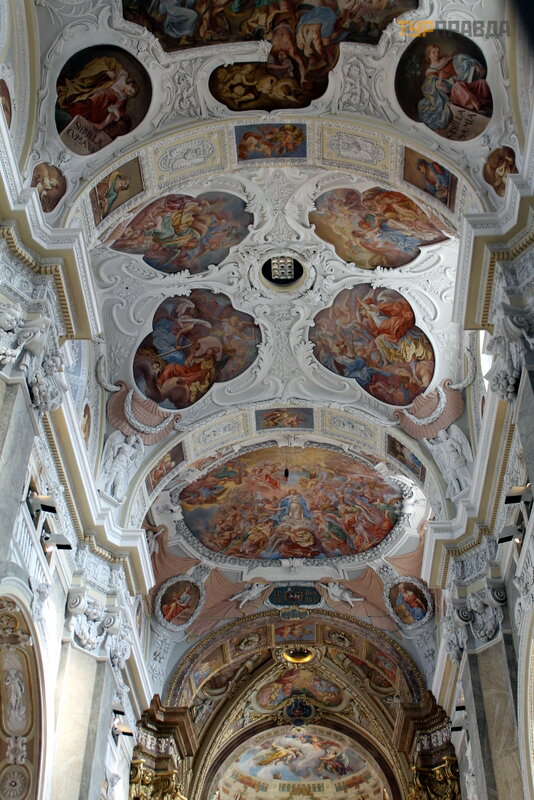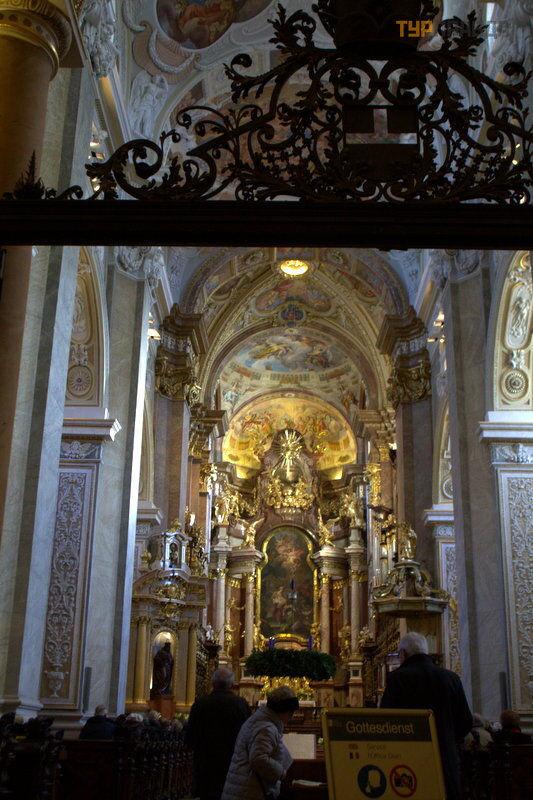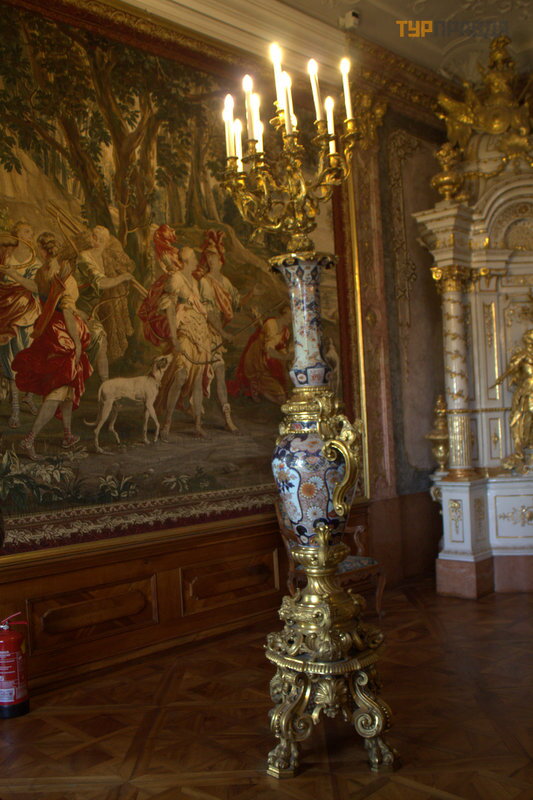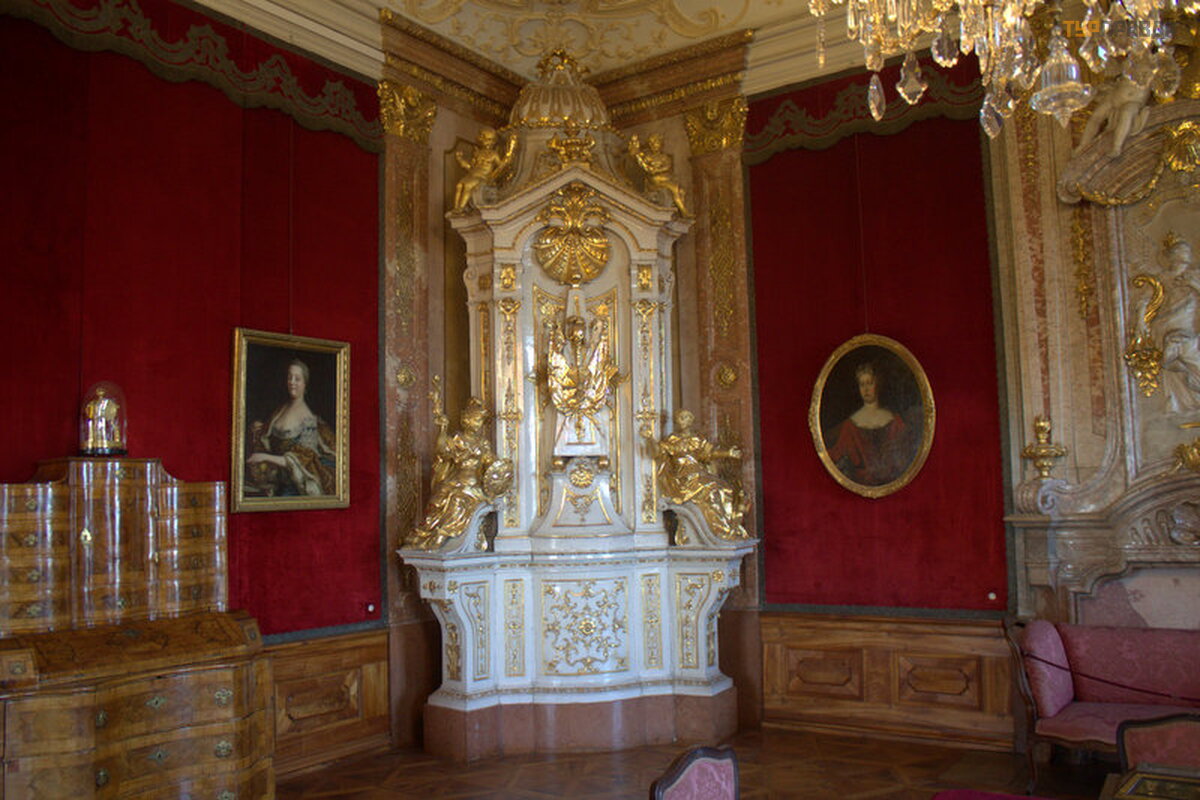To Austria since Christmas and beyond. Day two. The surroundings of Vienna and a few more fairs. Part 1

Day two. The outskirts of Vienna and a few more fairs
Today we have a trip planned, which to some extent became the reason for our entire trip to Vienna. We are waiting for Klosterneuburg Abbey ( Klosterneuburg Stift ), or "Austrian Escorial", as it is sometimes called. Among other various advantages, the Abbey owns one of the oldest wineries in Austria, the products of which I am primarily interested in champagne. We met him on our previous trip, and since then buying a couple of bottles for the New Year has been my not only dream, but an obsession. And this time the champagne did not disappoint us! ; ))))

Getting to the Abbey is quite easy - take the underground to Wien-Heiligenstadt (branch U4) and then by bus 400/402 or S40.
The ticket price is the same everywhere - 1.80 euros.
If you choose the train, you will have to walk 10 minutes from the train station to the entrance to the monastery, and the bus stops right in front of the entrance - the stop is called Klosterneuburg-Stiftsgarten.
But we couldn't wait to get there and jumped off the bus a couple of stops earlier. However, on such a sunny day it is not a sin to take a walk, see the town, be amazed by the flower beds in December ...
...as well as to get acquainted with the spirit of winemaking, which reigns here not only in the monastery.
And finally, Klosterneuburg Abbey in all its beauty!
The monastery owes its appearance to Margrave Leopold III of the Babenberg dynasty, who in the early twelfth century.
built a new castle in these places, and at the same time founded a monastery, which in 1133 was transferred to the possession of the Augustinians.
Later, the founder of the abbey Leopold III was canonized (1485), and today he is considered the patron saint of Austria.
The city that grew up around the castle and the monastery became known as Neuburg. Then there was a flood and the Danube changed its course, as a result of which part of the city adjacent to the market (Kor) was on the other bank and became known as Kornoyburg, and the city near the monastery became known as Klosterneuburg. Actually, everything remains the same.
In 1711, Charles VI began the development of the abbey, seeking to make it an Austrian religious and political center like Escorial.
In 1749, the Marble Hall with frescoes by Daniel Gran was completed.
In 1842
designed by architect Josef Kornheusel ...
4 courtyards were completed and the construction of the Austrian Escorial was completed.
We managed to build about 1/4 of what was originally planned, but what we have today is very impressive.
It was closed during World War II, and some monks took part in the resistance movement. After the war, the Abbey was restored. Currently, about 50 monks live here.
And the main thing, at least for me, is that there are almost no people in the monastery.
Although today is Sunday and many parishioners gathered for Sunday service.
Especially since December 8 in Austria is the feast of the Immaculate Conception of the Virgin Mary, and the local church is dedicated to the Nativity of Mary. That's why we also go to church ...
which last time could be considered only through a closed lattice.
Inside there are all the signs of baroque ...
...and Christmas paraphernalia (Advent Wreath), but during the service clicking the camera is somehow quite indecent ...
...so, after listening to the parish chants for a while, we go out and admire it outside.
First 1136
the church was built as a Romanesque basilica, in the 17th century it was rebuilt in the Baroque style, and in the 19th century two neo-Gothic towers were added to it.
Opposite the church there is another exit to the city and to the railway station by a steep staircase - we did not use it, but admired the views. ; ))
We enter the city from the side exit. But relatively early there, almost everything is closed. At least the tents at the local Christmas market aren't open yet. : ))
Accordingly, we solve the dilemma - to go on a tour of the Abbey or once again limit yourself to an external inspection.
This time curiosity wins, and we decide to take the so-called Grand Tour, which allows you to get acquainted with the treasures of the monastery, the collection of which began to gather in the XIV century.
The Grand Tour costs 12 euros, including the use of an audio guide. With him we go directly to the Treasury.
It occupies only a few halls, but boasts quite an abundance of exhibits of ivory, gold, clothing from the Middle Ages to the twentieth century.
Here is a gift box based on the legend of the Abbey: " Margrave Leopold III and Agnes von Waiblingen were in their castle room on their wedding day when a gust of wind from the open window picked up the veil (or perhaps the veil) ) bride and carried her away so that no one could find her. Only 9 years later, while hunting, the margrave saw a glow coming from a flowering elderberry bush.
It turned out that such a radiance is given by a veil entangled in the branches and completely preserved.
From this light the Margrave had a vision of the Virgin Mary, who ordered Leopold to build a church and a monastery in her honor in this place.
Another valuable item of the Treasury is the Austrian Archducal Bonnet, which was used in the coronation of Austrian monarchs. This crown was donated to the monastery of Klosterneuburg in 1616.
Archduke Maximilian III.
Well, then we return to the Hall of Giants, where there is now an information center, cash registers and souvenir shop ...
...and we go on a tour of the Abbey accompanied by a guide.
The tour is conducted in German, but when approaching each object in the same way as us, in a foreign language, the guide calls the digital combination for an audio guide with a description of a particular attraction.
We go up the central grand staircase ...
...and we get to the above-mentioned Marble Hall with frescoes. The views are really impressive.
The subject of the images, of course, is mostly devoted to the ruling Habsburg dynasty and their unification with other ancestral homes.
In order to be able to examine the ceiling frescoes in more detail, in the center of the hall there is a huge mirror with a magnifying effect, in which all the details are really visible. And the camera, by the way, does not perceive magnification and shows the display in the usual size, but in an inverted form. ; )))
Next is an enfilade of ceremonial halls, the first of which is called the Hall of Napoleon - here once literally for an hour stopped the famous emperor, being in these parts by road.
In the same hall, one of the valuable historical exhibits is the table of Napoleon's son, however, I did not fully understand how he got here (the table, not the son).
Next is the Throne Room ...
with bas-reliefs of Athena and, it seems, Maria Theresa on the walls ...
...pompous Dining Room ...
...with the fresco of Solomon's Feast on the ceiling.
The private rooms of the owner close the enfilade ...
...with a bas-relief by architect Josef Kornheusel on one of the ceiling sockets.
Further under the ornate arches we pass to the exit ...
...and move to the courtyards, where there is a library, a fountain, a Gothic balcony, as well as a small garden with various plants.
I think it looks more impressive in the summer.
Next is the chapel of St. Leopold with the main treasure of the Abbey - Verduner Altar (Verduner Altar) . It consists of 45 enameled panels, which were created in the Byzantine style in 1181.
jeweler Nicholas of Verdun (hence the name) as a cover for the church pulpit. The panels contain scenes from the Old and New Testaments, as well as the story of the Savior. The panels were assembled as an altar in about 1330, and at the same time 6 more panels were added to them.
You can learn all this from a 15-minute film about the altar, which tells the story and features of its creation, the technique of applying paints and enamels, as well as the dangers to which the Altar was exposed during his long life.
For example, during one of the fires there was a threat of its complete destruction, but to the general joy of the flame was extinguished… wine! ; )))
After the film we get the opportunity to enjoy the Altar live.
The setting of the Chapel, where it is located, deserves special attention given the luxurious stained glass windows, ceiling paintings and other artistic features.
Above the Altar is a reliquary with the relics of St. Leopold - the founder of the monastery.
In the next hall you can see different sculptures found in the vicinity of the monastery ...
...as well as the quadriptych, which once served as the reverse side of the Verdun altar. It was written by an unknown master in the fourteenth century.
Opposite another chapel - if I'm not mistaken, St. Agnes.
Honestly, there is very little information on the Internet behind the monastery and therefore it is almost impossible to check the correctness of the memories that remained in my head after listening to the audio guide.
ru / newimg / 3 / 1200x800 / 00/02/61/84 / 2618461.jpg "target =" _ blank " rel="nofollow"> 
Amazed by what we saw, we leave the chapel and return to civilization through a gloomy underpass (it is still used to drive fire engines and other large vehicles to the courtyards of the Abbey).
This is the end of the excursion, and with it our visit to the monastery. But we must say that we never regretted the decision to visit the Grand Tour, as the impressions of the treasures of the Abbey remained positive.




